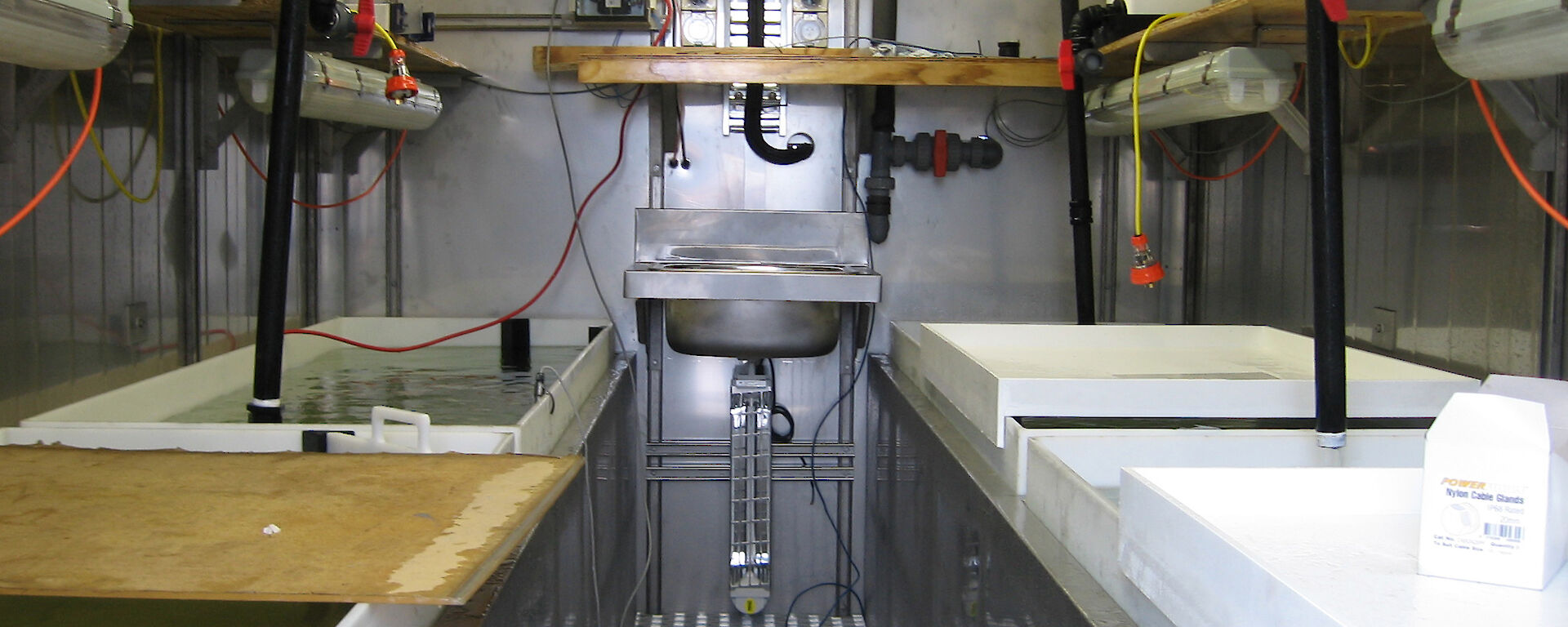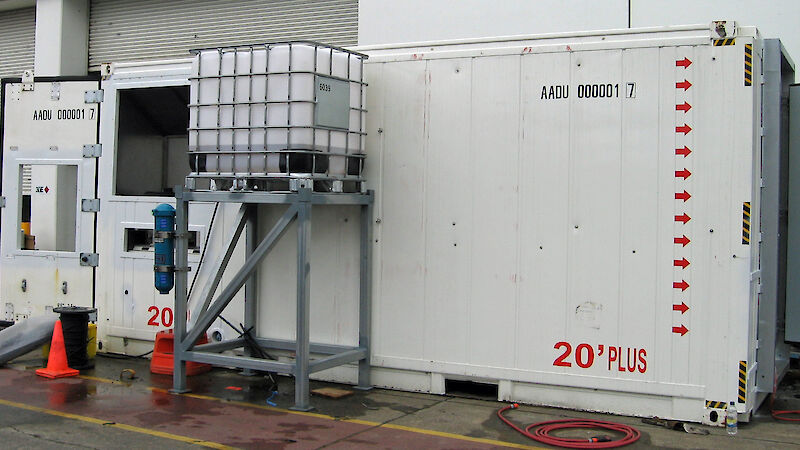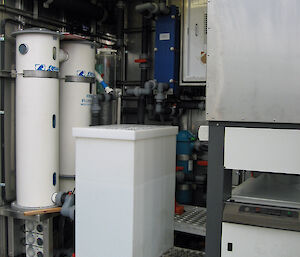Just like the TARDIS in the Dr Who sci-fi series, a new state-of-the-art field aquarium, designed for Antarctic use, packs a lot of kit into a seemingly tiny space.
Constructed inside a shipping container, the aquarium consists of a compact plant and four seawater tanks and associated experimental equipment.
The aquarium was recently shipped to Davis to house marine creatures involved in physiological and ecotoxicological experiments. This season, research is focusing on the effect of ocean acidification, elevated temperatures, and metal and fuel contaminants exposure, on a range of marine organisms.
The technical specifications for the aquarium were developed by Australian Antarctic Division marine research facility specialist, Rob King, based on the needs of marine scientists and his knowledge of what works and what doesn’t. It was then up to instrument technician, Steven Whiteside, to fit the equipment into the space; which he did with the help of Computer-Aided Design software.
'This is the first time anyone has built a self-contained aquarium for Antarctic use with this level of filtration and experimental capacity, in such a small space,' Mr King says.
'While all the component technology is proven, the completed facility is very experimental.'
To keep the marine animals healthy, seawater from the tanks is constantly cycled through the plant. Mechanical and biological filters first remove solids and metabolic waste products, such as ammonia, while an ultraviolet steriliser destroys any bacteria and viruses. The water then passes through a heat exchanger to cool it to −1ºC (the temperature of Antarctic seawater), before it is piped back into the tanks. Depending on the experiments being conducted, the water may be heated to 0ºC or 1ºC, for Antarctic experiments, and up to 8ºC for subantarctic experiments, through small heaters above each tank. Equipment to modify and monitor the carbon dioxide and salinity levels of the water is also available if required. Finally, a small container mounted on a stand outside the aquarium holds seawater to automatically replace water that is removed from the system and for periodical water changes.
The whole system is controlled through a computer that is hooked in to the station network, for 24 hour temperature monitoring. If problems arise, the computer sends a message to the appropriate person.
Research scientist, Dr Catherine King, says the aquarium’s modular design will allow it to be easily adapted for different experiments, and to support a huge range of science projects in Antarctica, including freshwater experiments for Antarctic lake organisms.
Right now though, it’s up to the crustaceans, echinoderms, gastropods, isopods, worms, fish, and a myriad of other marine species, to prove the success of their new home and its creators.
WENDY PYPER
Corporate Communications, AAD




